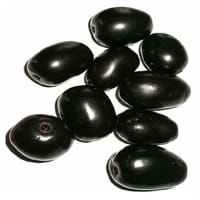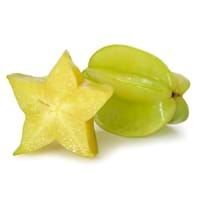Health Benefits
Cancer prevention, Heart care, Increase in haemoglobin, Regulates Blood Sugar, Ulcer prevention
Cancer prevention, Heat stroke treatment
General Benefits
Boosts immune system, Digestive aid, Fights against infections, Strengthens bones
Anti oxidant properties, Anti-inflammatory properties, Digestive aid, Maintains healthy cholesterol level, Treatment of sore eyes
Skin Benefits
Brightens and lightens complexion, Skin cleansing, Skin rejuvenation, Treatment of acne, Treatment of dark spots
Anti-aging benefits, Heals sunburn, Skin rejuvenation
Hair Benefits
Promotes longer and healthier hair, Protects hair
Promotes longer and healthier hair, Protects hair
Allergy Symptoms
Abdominal pains, NA
NA
Side Effects
Decrease in blood sugar levels, Allergic reaction, Throat irritation, Throat swelling, Possibly unsafe during pregnancy
Nausea, Vomiting
Best Time to Eat
As a snack in the late afternoon, Don't consume at night and before bed, Eat the fresh ones, avoid mixing with any other foods, don't eat after meal., Morning time (before lunch), Strictly avoid empty stomach
As a snack in the late afternoon, Eat the fresh ones, avoid mixing with any other foods, don't eat after meal., Strictly avoid empty stomach
Vitamin B5 (Pantothenic Acid)
Not Available
Vitamin B9 (Folic acid)
Not Available
Vitamin C (Ascorbic Acid)
Vitamin E (Tocopherole)
Not Available
Vitamin K (Phyllochinone)
Not Available
Lutein+Zeaxanthin
Not Available
Phytosterol
Not Available
Calories in Fresh Fruit with Peel
Calories in Fresh Fruit without Peel
Not Available
Not Available
Calories in Frozen Form
Not Available
Not Available
Calories in Dried Form
Not Available
Calories in Canned Form
Not Available
Not Available
Calories in Jam
Not Available
Calories in Pie
Not Available
Type
Tree fruit, Tropical
Tree fruit
Season
Monsoon, Summer
Autumn, Spring, Summer
Varieties
Ram Jarnun and Paras
King, Bell, Sri Kembangan, Arkin and Fwang Tung
Color
Black, Magenta, Purple
Golden yellow, Green
Inside Color
Purple
Yellowish Green
Shape
Oval
Oval and Star(Cross section)
Taste
Astringent, Sweet
Crisp, Juicy, Sweet
Origin
Bangladesh, India, Indonesia, Malaysia, Nepal, Pakistan, Philippines, Sri Lanka
Sri Lanka
Grows on
Trees
Not Available
Soil Type
Loam, Sandy loam, Well-drained
Loam, Well-drained
Climatic Conditions
Humid, Rainfall
Moist, Warm to hot climate
Facts about
- Wood of jambul tree is water-resistant wood & is used in railroads and to implement engines in the well.
- In Indian mythology, it is said that Jambul fruit was revered by Buddha.
- Jambul has a huge importance in Ayurveda.
- When carambola is cut horizontally, it forms a star.
- It is believed that carambola helps to cure hangover.
- Entire carambola is edible, including its skin.
- 2 varieties of carambola are cultivated: tart & sweet.
Top Producer
India
Taiwan
Other Countries
Bangladesh, Indonesia, Malaysia, Nepal, Pakistan, Philippines, Sri Lanka
Australia, Guyana, India, Israel, Malaysia, Philippines, United States of America
Top Importer
Not Available
Europe
Top Exporter
India
Malaysia
Botanical Name
Syzygium cumini
Averrhoa carambola
Synonym
Eugenia cumini
Not Available
Subkingdom
Tracheobionta
Tracheobionta
Division
Magnoliophyta
Magnoliophyta
Class
Magnoliopsida
Magnoliopsida
Order
Myrtales
Oxalidales
Family
Myrtaceae
Oxalidaceae
Species
S. cumini
A. carambola
Generic Group
Not Available
Not Available
Difference Between Jambul and Carambola
We might think that Jambul and Carambola are similar with respect to nutritional value and health benefits. But the nutrient content of both fruits is different. Jambul and Carambola Facts such as their taste, shape, color, and size are also distinct. The difference between Jambul and Carambola is explained here.
The amount of calories in 100 gm of fresh Jambul and Carambola with peel is 60.00 kcal and 31.00 kcal and the amount of calories without peel is Not Available and Not Available respectively. Thus, Jambul and Carambola belong to and category.These fruits might or might not differ with respect to their scientific classification. The order of Jambul and Carambola is Myrtales and Oxalidales respectively. Jambul belongs to Myrtaceae family and Carambola belongs to Oxalidaceae family. Jambul belongs to Syzygium genus of S. cumini species and Carambola belongs to Averrhoa genus of A. carambola species. Beings plants, both fruits belong to Plantae Kingdom.









